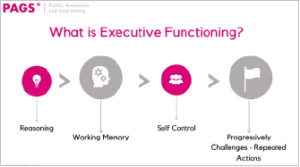An outline of the diagnoses that children with social communication needs can receive, and the solutions that teachers can use to promote successful learning.
There are many statistics that demonstrate how much there is to do in including neurodiverse people into a neurotypical world. One of the most shocking is that 60% of inmates in Young Offenders Institutes in England have a Speech, Language and Communication Need (Research for Ministry of Justice, 2016), mostly undiagnosed. And we know from other research that there is significant comorbidity with other diagnoses. The Kaplan study (2001) noted that 51.6 % of children with dyslexia have another disorder. For ADHD this overlap is 80%. In developmental disorders comorbidity is the rule not the exception.
This is why it is so important for teachers to understand the complex, spiky profile that neurodiverse learners have, and yet also employ simple, clear strategies in classrooms that include everyone in the learning.
The way into this problem is to develop what is called ‘executive functioning’. We know that the brains of neurodiverse learners, including those with language and communication difficulties, and dyslexic children, do not process information at the same speed as a neurotypical learner, so we have to practise developing this key area.

For example, at the end of this article, we are going to meet Maggie, who is primarily on the Autistic Spectrum, but also has processing difficulties. She is writing about spiders, and works methodically through quite complicated texts, but at a slower rate than some of her peers. In fact, when there is a large block of text on the page, the words often seem to ‘swim’ and muddle before her eyes, and she has to look away for a while.
We know now what is happening inside her head because neuroscientists have been able to study the functioning brains of willing volunteers whilst they are carrying out key tasks, such as processing text. There isn’t one way into the process of executive functioning, it’s more about progressively challenging children to improve with repeated practice. This works well when children spend time and effort on activities they love, using executive functioning to build on motivation. Short bursts of physical exercise between learning, such as martial arts and yoga, mindfulness and brain gym, help build emotional, social, and character development. These are all proven strategies which many teachers have been instinctively building into the curriculum, but are now validated by scientific research.

There is also a body of qualitative research data we can learn from. In the last decade, people with autism started to voice their feelings and opinions in fascinating first-hand accounts (Roth, 2010). In Tammet (2012) an extraordinary individual, with ASD, pointed out that communication did not come naturally, ‘as nobody asked him to speak’. Flack et al. (2010) point out that in the majority of people, communication and language development is a ‘result of exposure’ to different experiences.
For Maggie, this means she develops language best when she is visually and kinaesthetically working though activities and tasks that stimulate her processing of information. In short, if she is studying spiders, lots of spider visuals and spider models (maybe even a real spider!) will fire up the narrative text centres in her brain.
We know that for an individual with autism, whether they have speech or not, they may have difficulty in processing and forming language. They may also have difficulty in understanding the meaning of communication (Jordan, 2010) and have very little interest in interacting with other people. Therefore, any approach needs to be step by step – the smaller the steps the better – and using a full range of stimuli.
Lawson’s research (2013), highlights that motivation is ‘the key to opening paths to learning’ for individuals with ASD. She further asserts that motivational activities can increase gamma synchrony (brain wave activity), which broadens the attention span. In short, find out what Maggie enjoys!
So, what all of this research tells us is that we have to start from where the learner is. Any fixed model of development, assessment quartiles, standardised markers or national benchmarks will only tell the learner that they are some way behind their peers. A detailed and thorough assessment of what prior learning, including behaviours and preferences, the learner has acquired, alongside a mapping out of their developmental progress and areas such as self-regulation, will sit comfortably alongside their diagnoses and other indicators of processing and communication delays (for example WIATT II, Digit Span test).
This gives us our starting point: the place from which the journey begins. This is where the creative brilliance of the teacher and teaching assistant comes in. These are the people, after the parents and carers, who know the learner best, who will be able to apply the use of technology, personal interests, passions and hobbies, into a programme of motivational learning.
Let’s return to Maggie. She was a real pupil, in my English class and SEND resource. Initially she was struggling to cope in a mainstream setting. This girl, with elements of OCD and Asperger’s in her spikey ASD profile, was obsessed with arachnids. More than that, she was an expert. The key to reducing her anxiety and stress related behaviours was to build spiders into her curriculum. You’d be surprised how many times these octo-legged creatures can occur in maths equations! This was the start of her pathway to success, and the look of delight on her face, when presented with a task sheet with spiders crawling all over it, was a testament to the thoroughness of her profiling and mapping, and the willingness of her teachers to personalise her learning.
And this marrying of expertise (based on sound knowledge of the learner) and creativity is the very foundation stone of learner success.

PAGS®️ is a digital platform designed to assess and support Neuro-diverse learners. We are currently doing research in the form of an online interview to improve our product PAGS, and better serve the community around Neuro-diverse learners.
If you are interested in participating in this research, sign up at: https://lnkd.in/dvseRVJ
For The Link readers we are offering 2 months free usage of PAGs (normal price £20).
About Feliciea Jibson
Feliciea Jibson is MD at Felser Limited, founder of PAGS (Profile, Assessment and Goal Setting) an online profiling and progress monitoring tool (www.pagsprofile.com). She is a qualified Teacher with years of experience in teaching autistic children in schools, residential settings, and working directly with parents, care givers and families. She has completed her Masters degree in Autism at the University of Birmingham. Before opening Felser Limited in 2018, Feliciea worked for 4 years as a Head of Department for learners of 16 to 25 years old with severe learning difficulties and complex needs.
About David Green
David Green has worked for 30 years in mainstream and special education, specialising in social, emotional and behavioural difficulties and developmental delays. Dave is the Chairman of the Society of Education Consultants, Senior Leader in Education and Affiliated Partner for PAGS.
Please login to view this content
Login